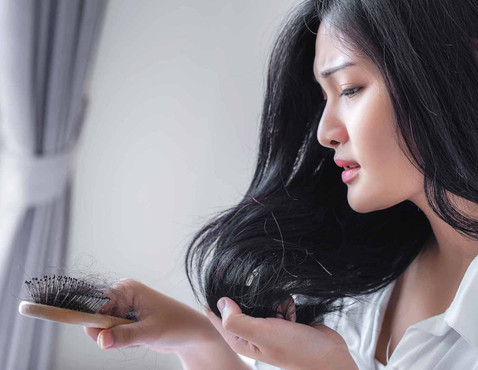What is Alopecia?
10th Dec 2024
‘Alopecia’ is a general term for any hair loss, including everything from common male-pattern baldness to patchy bald spots that appear out of the blue and the complete loss of all scalp, body and facial hair. There are three main types of alopecia:
Alopecia areata: patchy hair loss which can develop anywhere on the body.
Alopecia totalis: total loss of hair on the head.
Alopecia universalis: complete loss of hair on the head, face and body. This is the rarest form of alopecia.
Alopecia areata specifically, is an autoimmune disease in which the body attacks its own hair follicles, releasing a chemical message that causes the immune system to attack them, which then leads to hair loss. People with alopecia areata most commonly lose hairs on their head in circular patches – however, in more extreme cases, it can also lead to hair loss in larger areas of the scalp or even the entire body (alopecia universalis).
What causes alopecia areata?
It is still not entirely clear what causes alopecia areata, but it commonly appears to be a genetic condition - It’s estimated that about 10% to 20% of people with alopecia areata have a family member who has it. Environmental influences, trauma responses and high stress life events may also cause a predisposition to the condition. Ultimately, existing research suggests that something triggers the immune system to suppress the hair follicle, yet it still is not entirely known what that trigger is and it can vary from case to case.
STAGES OF ALOPECIA
When does alopecia areata begin?
You can get alopecia areata at any age; however, most people develop it before the age of 30. For many, the disease begins during childhood or the teenage years. According to the American Academy of Dermatology Association, about 50% of people who develop alopecia at a younger age see hair regrowth within about 12 months without treatment. Hair may regrow and never fall out again, although it’s also possible to have cycles of hair loss and regrowth for consecutive years.
What professional treatments are there for alopecia?
There is no cure for alopecia areata but there are treatments that are medically suggested to help hair regrow more quickly. The most common treatment is the use of corticosteroids which are anti-inflammatory drugs that can suppress the immune system and are administered through local injections, topical ointment application, or orally. Medications that promote hair growth or support the immune system like Minoxidil, Anthralin, SADBE, and DPCP are also often prescribed, however they cannot prevent the formation of new bald patches.
What else can I try?
Because alopecia areata is an auto-immune disease, keeping your immune system strong in other areas can be helpful. This can mean anything from following an anti-inflammatory diet, to avoiding daily stressors or taking holistic supplements to boost immunity. While experiencing hair loss it’s important to keep your scalp’s microbiome healthy, especially when there is a strong chance of hair growing back. Using products that do not contain harsh chemicals on your scalp in the interim like my ANTI-HAIR FALL COLLECTION can help create a healthy environment for when hair does regrow - and can also assist with strengthening the hair and nourishing the hair follicle to minimize future hair fall.
SIGNATURE:
Team Sturm
DATE:
20 April 2022




.jpg)






